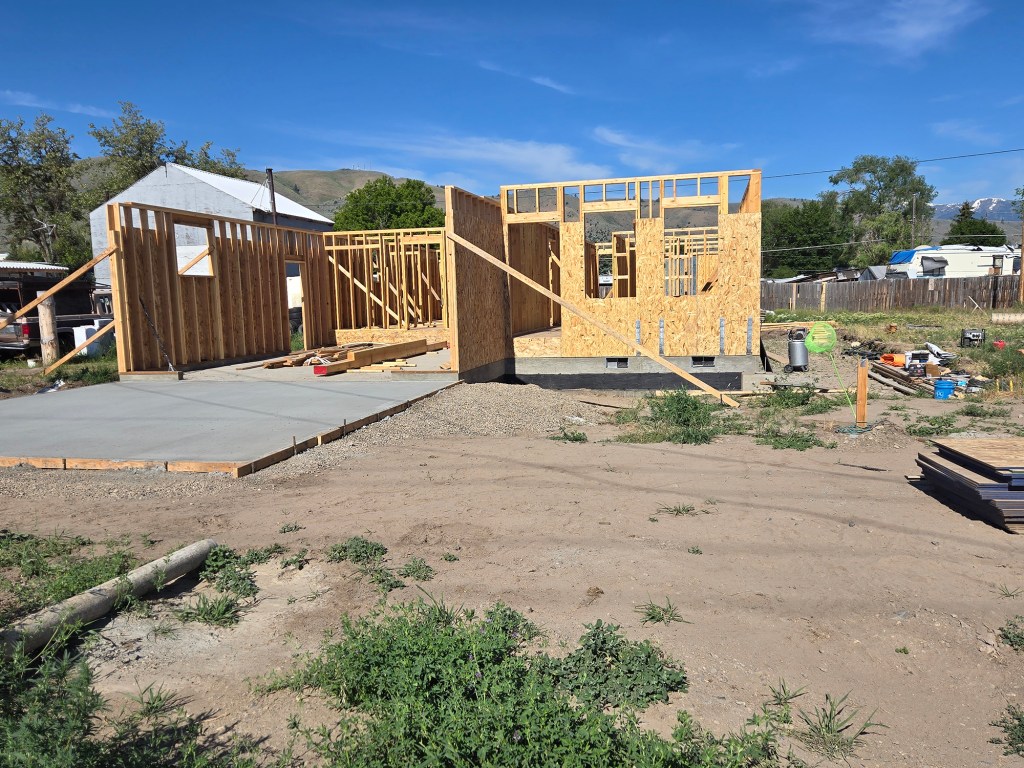Baker City manager says city reviewing development fees, standards with goal of encouraging new construction
Published 1:48 pm Tuesday, July 8, 2025

- Baker City Manager Barry Murphy said the city council will be reviewing the city's development fees and standards to see if changes could potential make it easier, and less expensive, to build new homes and commercial structures in the city. (Jayson Jacoby/Baker City Herald)
Baker City Manager Barry Murphy wants to make sure the fees the city charges to build homes and commercial structures are reasonable and don’t discourage development that can potentially help to ease the housing shortage and boost the local economy.
Murphy said another goal is to give contractors and developers accurate fee estimates.
“One of the biggest things is we want the system to be more transparent,” Murphy said. “A lot of this was driven by complaints from developers and contractors.”
Trending
Jason Letourneau, owner of Salmon Creek Builders in Baker City, said the city’s fee system is “baffling to me.”
Letourneau, who has lived here for eight years and said he “loves” the area, said he appreciates Murphy’s interest in the concerns.
Letourneau served on a city committee that discussed development fees.
The city also used $5,000 in lodging tax revenue — paid by guests at motels and other lodging businesses — to hire researchers from the University of Oregon to compare the city’s fees with what some other cities charge.
The university’s Institute for Policy Research and Engagement compiled a report examining fees from Baker City, La Grande, Ontario, Pendleton and Prineville.
Bob Parker and Jasper Riogeist from the institute, both joining by computer, presented the report to city councilors during their June 10 meeting.
Trending
The researchers compared fees for two basic scenarios — a three-bedroom single-family home of 2,000 square feet, and a 20,000-square-foot commercial office building.
Although Baker City’s ostensible fee for the home is second-lowest among the five cities, and the lowest for the commercial building, the U of O report notes that those figures are “potentially misleading” because the cities assess different types of fees, and have different ways of imposing those fees.
“Developers report that actual project costs often exceed what is communicated upfront, particularly for infrastructure extensions,” the report states.
Letourneau agrees with that assessment.
He called the report “detailed and thorough.”
The main difference between Baker City and the four other cities is that Baker City bases its fees largely on the length of the lot where construction is planned.
The basic concept is for the city to collect fees upfront from a developer to pay for the city to install water and sewer lines to serve the property.
“Baker City shifts the cost of infrastructure directly onto developers, often burdening the first developer who initiates construction in an area,” the U of O report states. “This may act as a deterrent for new development, particularly in areas requiring significant infrastructure expansion.”
The four other cities, by contrast, assess system development charges — SDCs. These are one-time fees that are also intended to help pay for the cost that new homes and businesses impose on a city’s infrastructure system.
Oregon law allows SDCs for five specific purposes, and cities can use the fees only for those purposes — water, wastewater, stormwater, transportation and parks.
Baker City officials considered imposing SDCs in 2007 but didn’t take any action.
One advantage of SDCs, the report states — and Letourneau agrees — is that developers can quickly calculate costs.
“I’m a big proponent of SDCs that are beneficial to all parties,” Letourneau said.
Murphy, who was hired as city manager in December 2023, said the city’s system of charging fees based on property footage made sense when bare land was being developed for the first time.
But in some cases now, when someone wants to build a home or other structure, they might be connecting to water and sewer lines that were installed, and paid for, decades ago.
Although the city allows the original developer to be reimbursed for those costs, the system can be confusing, Murphy said.
He said a majority of complaints city officials have heard are related to fees for residential construction rather than commercial.
“My goal is to make it much more simple for development to happen, and make it more affordable on the residential side,” Murphy said.
With the U of O report, and comments from Letourneau and other contractors, Murphy said he plans to take the matter to city councilors for consideration over the next 12 to 18 months.
A variety of options will be up for discussion, he said — including replacing the current system with SDCs, or changing the current system to avoid assessing much higher fees for projects based solely on their property footage.
In addition to reviewing the fee system, Murphy said he plans to ask councilors to consider changing the city’s development standards — matters such as the types of curbs and gutters required. In some cases, he said, the city’s requirements, some of which date back several decades, make it more expensive to build homes and subdivisions.
Letourneau thinks city officials need to consider changes both to the fee system and to development standards.
Both present potential obstacles to residential housing, particularly subdivisions, he said.
“It is a deterrent,” Letourneau said.







